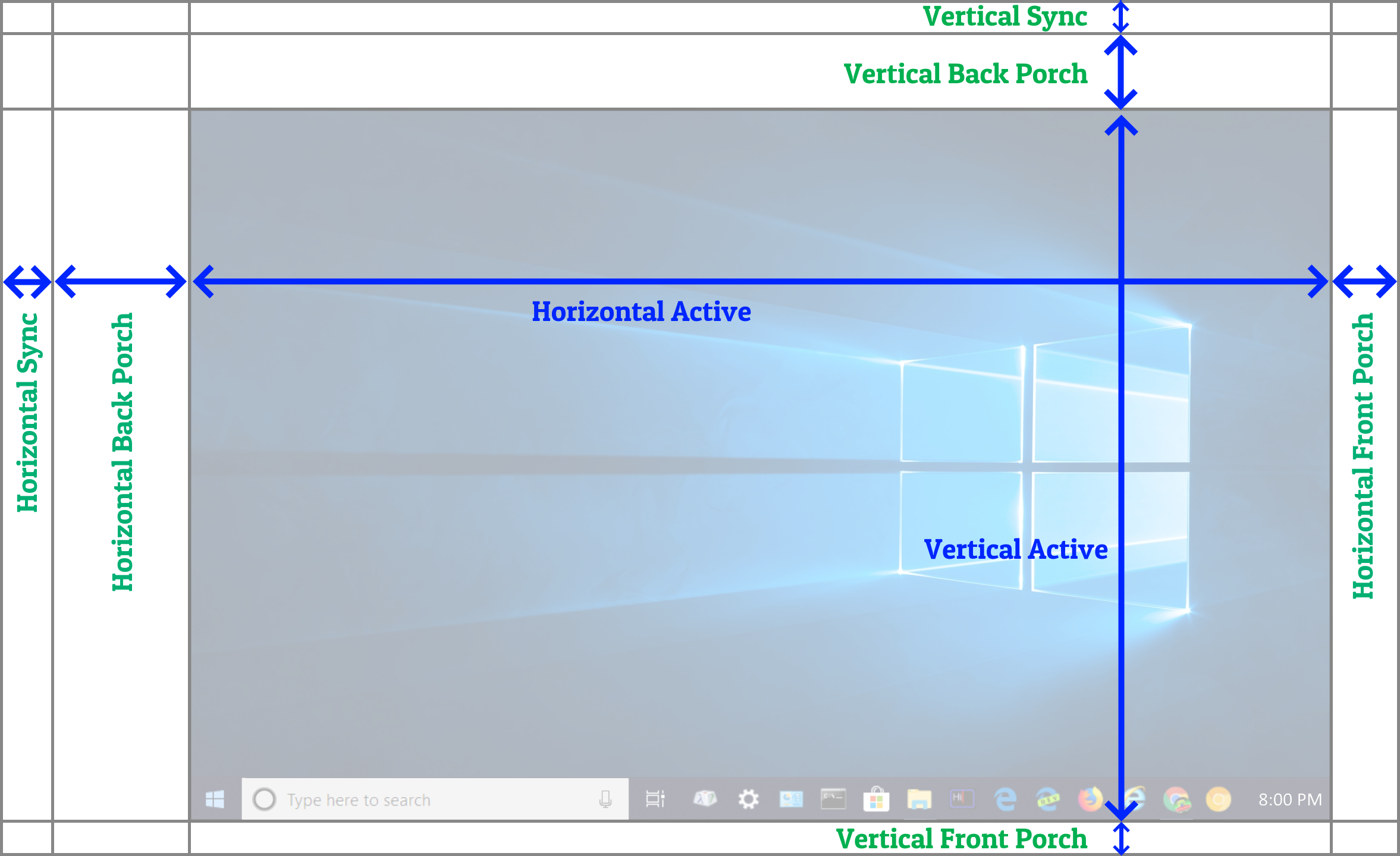Man, I wrote that in year 2014. Although I don't know remember napkin math I used 5 years ago in that 2014 reply -- I may have accidentally slipped an old math error in that 5-year-old post. Being some the early Blur Busters years! Nontheless, over the years, I've written about many related ideas in multiple locations on the Internet, here and elsewhere.zerp wrote:I'm currently researching into the possibility of a creating a laser raster based display. Can you explain the mathematics for how a 64 faceted "mirror prism" can create 135 khz horizontal scanning frequency and each variable used a bit more clearly?Chief Blur Buster wrote: Hmm, that's true -- not sure how precisely multisided (even 100-sided) spinning mirror prisms are. Many high end drills spin at 100,000 RPM, and creating an accurate 64-sided mirror prism might not be impossible. This creates 135KHz (80,000 / 60 x 64). Rotational accuracy can be made very accurate with a laser reference on one mirror automatically determining the angle for the next mirror. Repeat when manufacturing subsequent mirrors, and then at the very end, you've got 64 laser-reference precisely aligned & verified surfaces.
I don't think you need a 64-sided prism. How the current laser projectors do it uses far less facets. Also, the scanrate of 1080p@120Hz is less than 5x the scanrate of 480p@60Hz. The number of pixels per second isn't something that the scanrate has to worry about (the pixels per second is more tied to how fast the beam can be modulated while it's horizontally scanning across the screen).
However, continuing this:
Many people have been inspired by Blur Busters since 2013 thanks to what they read on Blur Busters and the great idea sharing of already-publicly-available generic information over the years. Most prisms are usually generic stuff, so, let's begin:
First, one needs to be fully familiar with custom resolutions, whether be PowerStrip or ToastyX or NVIDIA Custom Resolution.
As cables transmit one row at a time, and displays refresh one row at a time, and the common refreshing direction of most displays is top-to-bottom as seen in in high speed video.

Understanding the structure of the signal, the horizontal scan rate is the total number of pixel rows per second -- including the blanking interval (vertical back porch, sync, front porch, active, all totalled). A 1080p 60Hz signal is 1125 pixel rows on the cable including 45 offscreen scanlines that are synchronization-related. So 1125lines x 60Hz = 67.5KHz horizontal scan rate. Double that to get 120Hz vertical refresh rate (full refresh cycles per second), and you've got 135 KHz horizontal scan rate (pixel rows per second including blanking interval).
The question of how to create 135 KHz scan rate:
- Via MEMS mirror
- Via prism
- Via both (creatively)
Is left as a complicated exercise to the projector engineers.
_____________
Nontheless:
You also want to sweep continuously, top-to-bottom, rather than bounce (scan top-to-bottom then bottom-to-top, etc), considering the scanskew problems (http://www.testufo.com/scanskew) and Avoiding Zig-Zag Artifacts of Split Refresh Architectures written based on an old early-2017 post titled theoretical split-refresh 960Hz OLED. This is really old vision physics stuff written in late 1990s in Charles Poynton's paper so the moral of the story is you want to scan in the same direction, every refresh cycle, to avoid weird skew-artifacts that shows up on the bounce-scan laser projectors (scans top-to-bottom then scans bottom-to-top, etc).
It's just elementary vision physics 101 -- varying the scan pattern in adjacent refresh cycles, will often creates artifacts that you did not anticipate -- but is common sense to other researchers such as Charles Poynton (and to me)
Now, assuming you're following that along well, figuring out how to scan a laser back-n-fourth 135000 times per second with perfect consistency refresh-to-refresh, is quite an engineering challenge since you're having to move something mechanically very fast (whether a MEMS mirror or a prism, or both -- e.g. for horizontal versus for vertical).
The use of a MEMS mirror(s) is common in laser engineering nowadays, so that can modify the prism mathematics depending on how you construct the mirror & prism together. That's your homework -- and there are other methods than using a rotating prism which might not be the best of ideas. What works on paper might not work in reality, so there is a huge amount left to you as an exercise...


